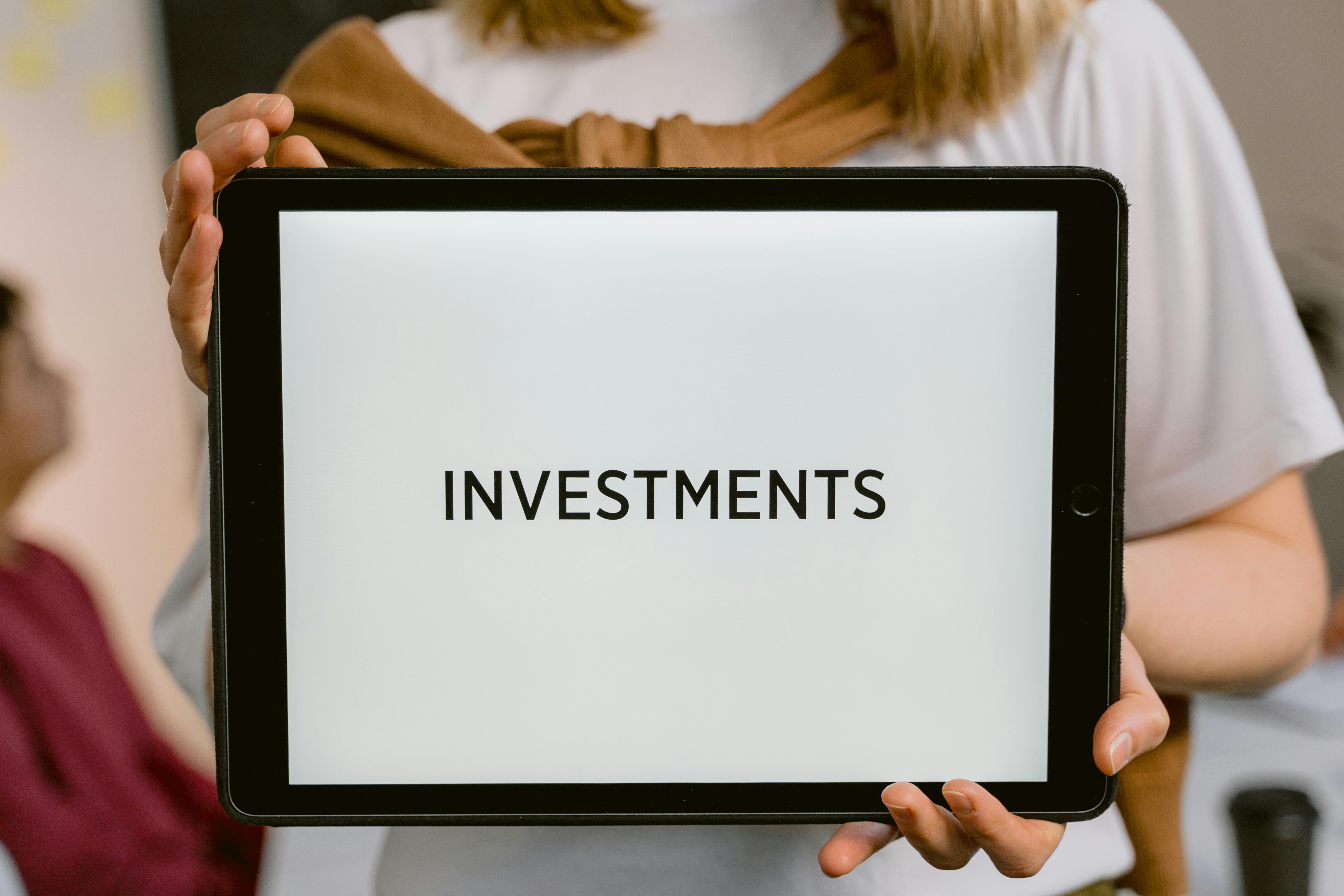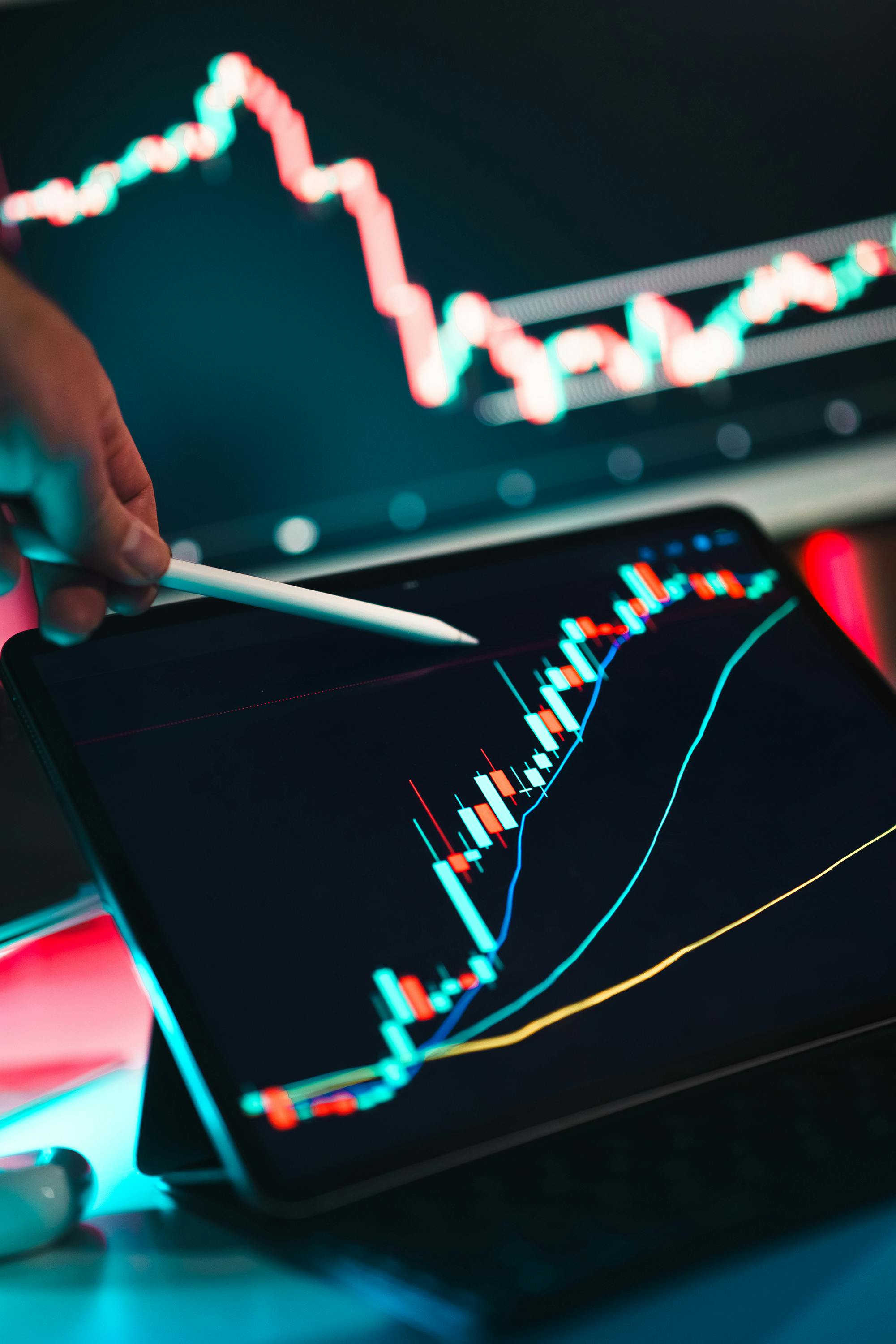Ecuador Index Fund Investing: Smart Steps for Long-Term Growth
Ever wondered how ordinary Ecuadorians—folks juggling careers, raising families, worrying about inflation—can actually build long-term wealth without turning into day traders or betting on risky start-ups? I used to think investing required Wall Street connections, but back in 2017, after Ecuador’s economy finally stabilized post-dollarization, I started hearing about index funds from both cautious retirees and young professionals. Funny thing is, the more I learned, the clearer it became: you don’t need to be a finance expert to grow your savings with steady, realistic strategies—especially if you understand the basics of index fund investing adapted to Ecuador’s quirks. Still with me? Good, because what you’re about to read isn’t just a list of generic tips you’ll find on expat forums or from “gurus” with zero skin in the game. This is a field guide—grounded in what actually works for Ecuadorians aiming for financial resilience and peace of mind.
I have to say, there’s a real sense of empowerment when you realize long-term investing is less about “timing the market” and more about “time in the market.” I’ve watched friends in Quito cautiously dip their toes into the market, only to see that even modest, well-placed index fund investments outpace most savings accounts over time. But let’s not overhype: Ecuador has unique challenges—currency risks, regulation hurdles, limited local fund options—but none are deal-breakers (if you’re a little clever and stubborn like most Ecuadorians I know). So, let’s break through the noise and answer: how can everyday people in Ecuador put smart index fund investing to work for the kind of stable, sustainable growth that lets you sleep at night?
What Is an Index Fund? (And Why Should Ecuadorians Care?)
Here’s how I’d explain it at a Quito café: an index fund is basically a low-cost financial product (think: mutual fund or ETF) that pools your money together with thousands of other investors to “buy a slice” of every company in a given stock index—like the S&P 500 in the US or even emerging market indexes covering Latin America. Why should you, or anyone in Ecuador, pay attention to this? Because unless you have unlimited time and research skills, trying to individually “pick winners” is a losing game long-term (and, let’s be real, no one wants additional stress about stock charts after a long workday).
What really strikes me about index funds is their brutal simplicity: you aren’t betting on one company, but on the entire market’s long-term trajectory—which, history shows, almost always trends upward over decades (despite short-term drama and recession headlines)1. Even Warren Buffett, the world’s most famous value investor, keeps telling “normal people” that boring old index funds will beat most professional managers over time2. It’s that simple. Yet, when I’ve tried explaining this to family and friends, there’s almost always skepticism: Is it that safe? What if Ecuador’s politics go bonkers again? Can I even access these funds from here? These are fair questions—so let’s break down not just the what, but the why and how for Ecuadorians.
Key Insight: Index Fund Investing Is About Accepting the Average—Because the Average Outperforms Most Active Investors in the Long Run
Instead of exhausting yourself chasing “the next big thing,” consider accepting broad market growth. In essence, you’re investing in human progress, not in picking horses—all with ultra-low fees.
How Index Funds Actually Work: The Simple Version
Let’s imagine you’ve got $100 to invest. With a standard index fund, your dollars are automatically split and invested among all the companies tracked by that fund’s index—so, if the market booms, you benefit across the board; if individual stocks drop, you’re cushioned by diversification3. This “set it and forget it” nature is the main reason busy Ecuadorian families and first-time investors gravitate toward index funds, in my opinion. I should clarify: you’re not clutching physical shares, but rather, units in a fund (think: a “greatest hits” playlist, versus owning every artist’s full album).
- You’re not locked in—index funds can be bought or sold at market price (daily, for mutual funds; instantaneously, for ETFs)
- Fees are generally a fraction of what traditional fund managers charge—sometimes as low as 0.03% annually
- Dividends from the underlying stocks are pooled and either reinvested or distributed, depending on the fund
- Transparency is high: you know exactly what companies you’re invested in
Ecuador’s constitutionally dollarized economy means your investment returns in global index funds are rarely eroded by local currency crises—a huge advantage over many neighbors.
Why Do Index Funds Make Sense in Ecuador’s Current Economy?
After the rollercoaster of the late 1990s financial crisis and the 2008 commodity collapse, Ecuadorians have—understandably—a deep mistrust of anything that seems too “sophisticated.” For years, fixed-term deposits and real estate dominated household portfolios. But guess what? Over the last decade, inflation has quietly chipped away at those savings, and local returns lagged global markets in most years4. So how can today’s Ecuadorian earn steady, inflation-beating growth?
To be more precise, US-dollar access, growing fintech platforms, and relaxed (but still evolving) Ecuadorian investment regulations mean both young professionals and retirees have more legitimate routes than ever to global markets. Of course, you need to watch out for compliance, tax, and repatriation rules. But the window is open wider than it was even five years ago—and that’s a rare opportunity for building multi-decade wealth, not just quick wins.
Key Terms Ecuadorian Investors Must (Actually) Know
Okay, let’s step back for a moment. Even if you “get” the case for index funds, some jargon naturally creeps in. Based on my early stumbles—like mixing up “expense ratios” with “brokerage commission”—here’s an honest, Ecuador-specific glossary (with fresh commentary and occasional clarifications):
- Index: A pre-set basket of stocks, bonds, or assets used to measure a segment of the market (e.g., S&P 500, MSCI Emerging Markets).
- ETF (Exchange-Traded Fund): A fund you can buy/sell like a stock via most online brokers—even from Ecuador, typically in USD.
- Expense Ratio: The annual fee charged by the fund manager—often below 0.20% for major index funds.
- Brokerage: An online platform (sometimes with local Ecuadorian partners, but often US-based) where you establish your account and execute trades.
- Rebalancing: Adjusting your index fund allocation periodically to stay aligned with your risk/return goals.
- 多样化: Not putting all your eggs in one basket—index funds do this automatically by spreading risk across sectors, geographies, and company sizes.
Pro Tip: Always Check Expense Ratios Before Investing
For Ecuadorian investors accessing foreign markets, hidden fees kill returns over time. Always compare expense ratios—it’s your silent “performance leak.”
Risks, Realities, and Regulatory Considerations in Ecuador
I’ll be completely honest: any investment advice that skips risk—and local regulatory quirks—is, at best, incomplete. What actually matters (and what I keep learning, year after year) is this: Ecuadorian investors face a unique blend of global opportunity and local complexity5. Let me clarify with a story. Last year, a colleague tried to wire funds to a US brokerage. Everything seemed fine—until he hit a wall of “source of funds” questions and reporting rules, all while worrying about possible double taxation when repatriating returns6. The bureaucracy? Real and occasionally maddening. That said, most reputable platforms now allow Ecuadorian KYC (Know Your Customer) verification—but you should always verify up-to-date compliance with both Ecuador’s Superintendencia de Compañías and the international broker of your choice.
- Taxation: Ecuador taxes foreign income if you remit or use returns locally. Document everything, and consult a tax advisor—rules change frequently.
- Repatriation: Moving funds back to Ecuador can trigger reporting obligations. Banks may request source-of-funds documentation or proof of tax status.
- Regulation: Some US brokers restrict new accounts from Ecuador; others require extra paperwork. Always cross-check before wiring money.
- Fraud: Scams targeting Latin Americans are rampant. If an “advisor” promises sky-high returns, run the other way. Only use established, regulated brokers.
Key Takeaway: Do Your Homework
Stay current on Ecuador’s compliance, banking, and international remittance laws. When in doubt, consult both a local lawyer and a financial advisor with direct experience in cross-border investing.
Index Fund Investing Process: A Step-by-Step Ecuadorian Guide
Ever notice how those US “how-to” articles gloss over local specifics? Not here. Here’s a realistic, Ecuador-tuned process—no sugarcoating—so you can actually get started, even if you’re new:
- Define Your Goals: Retirement? Education fund? Wealth preservation? Be honest about your time horizon and cash flow needs; this changes everything.
- Select a Brokerage: Compare platforms like Interactive Brokers, TD Ameritrade, or Ecuadorian-linked partners. Make sure they accept Ecuadorian accounts and USD deposits.
- Verify Documentation: Gather Cedula/ID, proof of residence, and, for US brokers, IRS W-8BEN for non-resident aliens (prevents double taxation).
- Choose Funds: For global exposure, consider S&P 500 ETFs (e.g., VOO or IVV), total market indexes (e.g., VT), or emerging markets ETFs (e.g., EEM or IEMG).
- Allocate & Invest: Start with what you can afford—monthly is better than one-time lump sums (this smooths market ups/downs).
- Track & Rebalance: Review your allocation yearly or after major life changes; don’t obsess over daily price swings.
- Document Everything: Keep detailed records, bank wire slips, and fund statements for both Ecuador and foreign tax obligations.
Sound familiar? It should, but here’s the surprise—nearly every successful index fund investor I’ve met in Quito or Guayaquil simply follows these steps, repeats consistently, and avoids shortcuts. That, from my perspective, is the “real secret.”
Common Questions From Ecuadorian Investors
Q: Can I invest in index funds directly from Ecuador, or do I need a US address?
A: Many reputable US brokers allow Ecuadorian citizens to open accounts with local IDs—but the process can take several days. Always read the latest broker eligibility updates.
Q: What if I have limited monthly savings—does index fund investing still make sense?
A: Yes! Most brokers allow you to buy fractional ETF shares. Even $50/month invested consistently compounds remarkably over a decade.
Index Fund Types and Practical Allocation Strategies (2025 Update)
On second thought, what I should have mentioned earlier is that not all index funds are created equal. Choosing the right one for your personal situation—and anchoring your allocations for Ecuador’s particular challenges—demands a bit more nuance. Here’s a practical breakdown:
| Fund Type | Best Fits For | Typical Annual Return (10Yr, Net) | Global Example |
|---|---|---|---|
| S&P 500 | US-market exposure, long-term portfolios | ~10% (USD)7 | VOO, IVV, SPY |
| Total World | Max diversification, global growth bets | ~8.5% (USD)8 | VT, ACWI |
| 新兴市场 | Higher risk, potential higher reward | ~4.5–6% (USD)9 | EEM, IEMG, VWO |
| Bond Index | Stability, retirees, balance against volatility | ~2–4% (USD) | AGG, BND |
Layering risk (mixing equities and bond index funds), rebalancing yearly, and aligning with real-life Ecuadorian challenges—like political cycles and global USD fluctuations—matter far more than trying to “pick” market winners.

Ecuadorian Economic Realities: Inflation, Dollarization, and Investment Growth
Here’s the thing though—Ecuador’s unique economic structure (thanks to dollarization in 2000) gives local investors a real leg up, but only if you pay attention to how inflation and global USD dynamics actually affect your returns10. Having lived through inflation spikes and currency controls in neighboring countries, I genuinely appreciate the “luxury” of not seeing my index fund gains wiped out by overnight devaluation. Still, even with the stability of USD, Ecuador’s inflation rate (averaging 2-3%/year in recent years) chips away at cash sitting idle in traditional accounts.
Ecuador was one of the first South American nations to fully dollarize its economy. The result? Index fund investors enjoy a rare buffer against currency risk—a powerful advantage when aiming for USD-based growth.
But let’s be real—dollarization isn’t a silver bullet. “Safety” breeds complacency, and Ecuadorian fixed-term deposits (certificados de depósito a plazo) rarely offer real capital growth after taxes and inflation adjustment. On the flipside, global index funds give you two things: (1) exposure to growing multinational companies, and (2) the ability to compound USD-denominated returns over decades. Would I place everything in one global ETF? Absolutely not. To my mind, blending asset classes and indexes is essential for survival in Ecuador’s—frankly—volatile political cycles.
Expert Tip: Re-invest Dividends (Don’t Cash Them Out)
Consistently reinvesting dividends—rather than withdrawing—supercharges long-term compounding, outstripping most Ecuadorian bank yields within 8–10 years11.
Case Studies: Ecuadorian Investors Navigating Real Volatility
Honestly, I reckon most investment guides skip the bumpy parts. But it’s the volatility—protests, power shifts, “crisis” headlines—that tests whether your strategy really holds water. Two stories stick with me:
- María, a Cuenca School Principal: Began with a global ETF allocation in 2016. Despite multiple presidential turnovers and COVID-era panic, she stayed the course. Ten years out? She’s averaged a steady 7.8% annual return and used portfolio rebalancing to fund her daughter’s education abroad.
- Diego & Lissette, Young Quito Family: Started dollar-cost averaging (DCA) into S&P 500 index funds in 2020 after seeing their parents’ savings decimated in the 1999 crisis. Through political unrest and pandemic shocks, automated monthly investments gave them psychological safety—and outperformed Ecuador’s local bonds twofold.
Smart Index Fund Allocation for Every Stage of Life
Moving on, let’s get practical. What actually works for Ecuadorians at different life stages? While every situation is unique, here’s what I’ve learned after advising a mix of college grads, mid-career professionals, and retirees (with plenty of learning moments, I promise):
| 人生阶段 | Core Allocation Strategy | Sample Index Fund Mix | Key Risk Management Move |
|---|---|---|---|
| Early Career (20s-30s) | Aggressive, focus on growth, minimal bonds | 80% S&P 500 or Global Equity, 20% Emerging Market | Use monthly auto-investing, ignore market news |
| Mid-Career (40s-50s) | Blend growth with stability, add bonds | 60% S&P 500, 20% Global, 20% Bond Index | Annual rebalancing, adjust for major life events |
| Pre-Retirement (60+) | Defensive, prioritize principal protection | 40% S&P 500, 40% Bond Index, 20% Dividend Funds | Rebalance semi-annually, keep 1-2 years cash |
The jury’s still out for me on “optimal” allocations—markets and personal lives change unpredictably—but what matters is adapting these split strategies to both your comfort level 和 Ecuadorian context. Remember, you can always start conservatively and ramp up as you learn.
Behavioral Pitfalls: What Trips Up Actual Ecuadorian Investors?
Honestly, even the smartest strategies evaporate if you can’t stick to the plan under pressure. I go back and forth on this, but over the past decade, I’ve seen three habits sink more Ecuadorian investors than any headline “market risk”:
- Panic Selling: Selling during market tumbles—especially after local political crises—locks in losses that index funds would recover from given time.
- Chasing Trends: Switching between hot sectors/funds almost always underperforms sticking to one sound allocation strategy.
- Ignoring Fees: Even minor annual expenses erode USD returns—compounded over decades, they’re a silent tax.
What blows my mind is how often panic or impatience costs more than market “events.” The more I consider it, the clearer it gets: sustainable wealth is built on boring consistency, emotional self-control, and low fees—not flashy investment tips.
Quick Tip: Automate and Forget
Setting up repeat contributions and pre-scheduled rebalancing is, hands-down, the most human-proof way to stay invested for 10+ years—no matter who’s president or what’s trending in Ecuadorian news.
Frequently Overlooked: Taxes and Reporting in Ecuador
I need to revise my earlier point: taxes can be the most overlooked pain point for Ecuadorian investors. Here’s the deal: foreign investment income is taxable in Ecuador if you remit funds back home or use the income locally12. The SRI (Servicio de Rentas Internas) requires annual declarations—and banks sometimes flag international wires for extra “clarification.” What puzzles me sometimes is that, in practice, these rules get updated without much publicity, so I always check government bulletins quarterly. When in doubt, play it safe: document everything, ask a professional, and don’t be lulled into thinking enforcement is lax. You will owe taxes if caught.
- Report all repatriated gains annually
- Maintain digital copies of broker statements
- File a W-8BEN with foreign brokers to avoid double taxation
The Future: Digital Platforms and the Changing Ecuadorian Investor
Currently, fintech innovation is reshaping access for Ecuadorians—but with plenty of caveats. New digital brokerage services and international platforms open more doors (and risks). Just last December, industry meetups were buzzing about local “robo-advisor” pilots for the Ecuadorian market, potentially allowing smaller minimums and automatic portfolio management. Based on what I’ve seen, the new generation of investors (Gen-Z and Millennial) are more skeptical of big promises but far more tech literate than their parents13. Expect account onboarding, verification, and reporting to get easier—but don’t trade common sense for convenience. Unregulated “copy-trading” apps still pose real legal and performance risks.
Looking Forward: Build Wealth at Your Own Pace (But Start Now)
There’s no “perfect” time to start investing—only the habit of regular action, grounded in Ecuador’s real economy and your honest life needs. Every single Ecuadorian I’ve coached who started small, stayed patient, and stuck to index funds has thanked me a decade later. If you wait for all uncertainty to vanish, you’ll wait forever.
Action Steps: Your Starter Checklist for 2025
- Clarify your why—define a specific, motivating investment goal.
- Open or review your brokerage account (double-check current Ecuador eligibility).
- Choose broad-market index funds with proven, low-cost performance history.
- Set automated monthly investments (even tiny ones add up).
- Rebalance annually; don’t try to “time” the market.
- Document your journey. Track progress and adjust as your life changes.
- Stay curious—read, attend workshops, and talk to trusted local professionals.
Ecuador is home to over 500,000 account holders in international brokerages as of 2024, most under age 40—a sign of massive generational change toward global-investment thinking14.
Conclusion: Human Habits Build Wealth—Not Headlines
I’m still learning every day, but if there’s one lesson index fund investing in Ecuador has taught me, it’s this: steady, human decision-making beats news-driven panic and social media hype. Start small, automate contributions, and don’t chase fads—let real compounding (and old-fashioned patience) do the heavy lifting for your family’s future. On second thought, maybe that’s the most honest investment lesson I can offer—whether you live in Guayaquil, Ambato, or anywhere in between.
Want to Share or Revisit?
Bookmark this guide and revisit every six months—treat it like a living playbook you can adapt, update, and improve as Ecuador’s opportunities grow. And if it helped you, pass it forward to someone just starting out. That’s real “investment.”
参考



